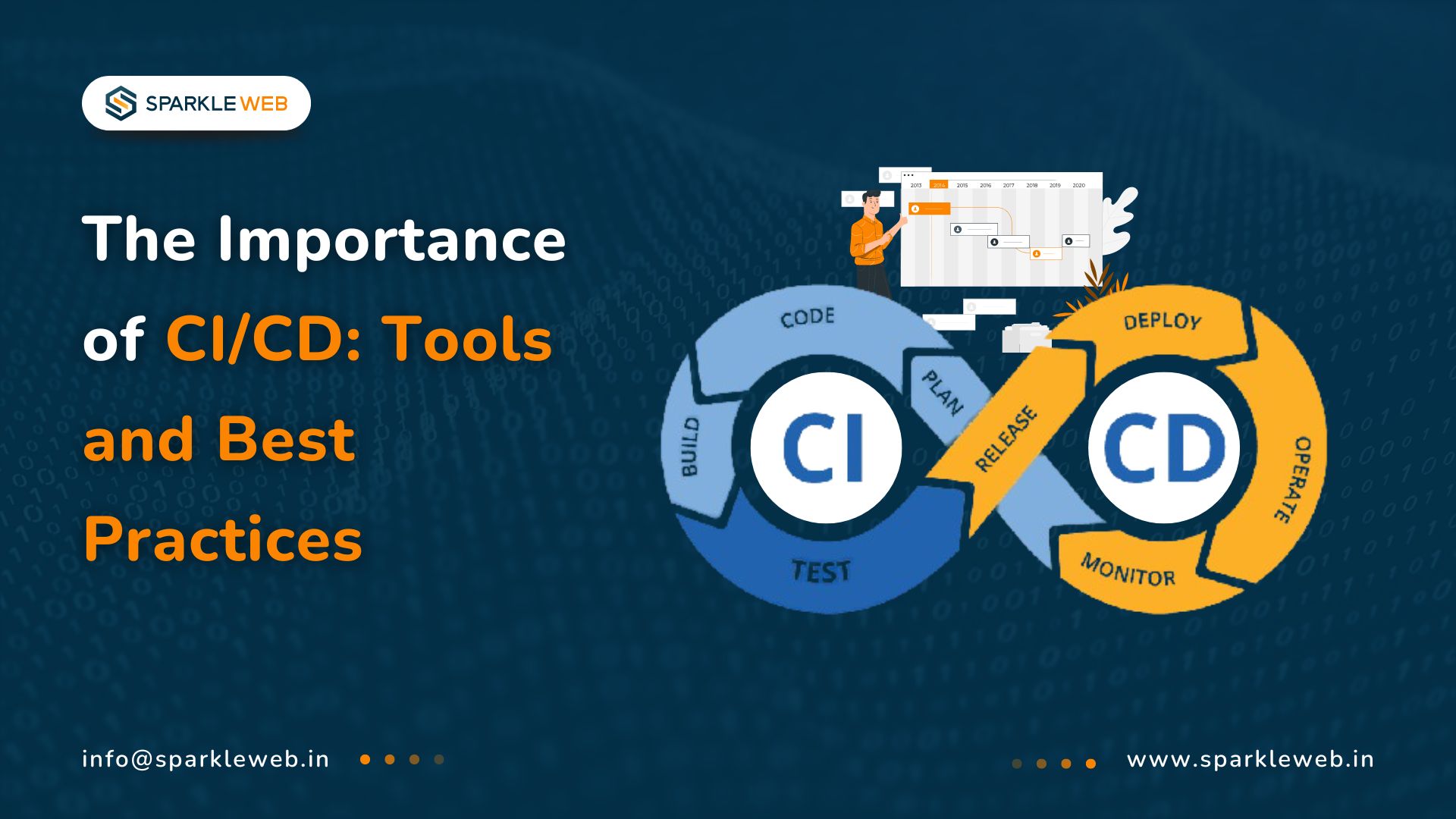What Is CI/CD?
- Continuous Integration (CI): This involves automatically merging and testing code changes as they are made. It ensures that the code is always in a state where it can be deployed.
- Continuous Delivery (CD): This takes CI a step further by automating the deployment process, making it possible to release new features and fixes quickly and reliably.
How CI/CD Works?
- Code Commit: Developers write code and commit their changes to a shared repository.
- Automated Testing: As soon as the code is committed, automated tests are run to check for any bugs or issues.
- Build: The code is then compiled and packaged into a format that can be deployed (like a Docker container).
- Deployment: The packaged code is deployed to a staging environment for further testing or directly to the live production environment.
- Monitoring: After deployment, monitoring tools keep an eye on the performance and stability of the application. If any issues arise, they can be addressed quickly.
Key Characteristics of CI/CD
- Automation: Automation is the backbone of CI/CD. It ensures that code is tested, built, and deployed without needing manual intervention.
- Version Control: CI/CD relies on version control systems like Git to manage code changes and track the project’s history.
- Testing: Automated tests are crucial in CI/CD to ensure that code changes don’t introduce new bugs or issues.
- Monitoring: Post-deployment monitoring helps teams detect and respond to problems in production, keeping the application stable.
- Rollback Mechanisms: CI/CD pipelines often include automated rollback options to quickly revert to an earlier version of the software if a deployment fails.
Why CI/CD Is Important for Smooth Deployments?
- Faster Time to Market: CI/CD automates many manual steps in software deployment, allowing teams to release new features and fixes more quickly.
- Reduced Risk: By automatically testing code changes before deployment, CI/CD helps catch bugs and errors early, reducing the risk of issues in production.
- Increased Collaboration: CI/CD encourages teamwork between developers and operations teams, leading to better communication and more efficient workflows.
- Scalability: As software projects grow in complexity, CI/CD pipelines can handle large codebases and multiple contributors, ensuring the development process remains efficient.
How a CI/CD Pipeline is Useful During Project Time?
- Automating Routine Tasks: CI/CD pipelines automate repetitive tasks like testing, building, and deployment, freeing up developers to focus on writing code and solving problems.
- Reducing Manual Errors: By automating key steps in the deployment process, CI/CD reduces the chance of human error, leading to more stable and reliable software releases.
- Improving Feedback Loops: CI/CD provides immediate feedback on code changes, allowing developers to quickly identify and fix issues before they become bigger problems.
- Facilitating Continuous Improvement: By enabling frequent releases, CI/CD allows teams to improve their software continuously, making it better based on user feedback.
Benefits of a CI/CD Pipeline
- Improved Quality: Automated testing and continuous integration catch bugs early, leading to higher-quality software.
- Faster Releases: CI/CD pipelines make the deployment process quicker, allowing teams to release new features and fixes faster.
- Reduced Costs: By automating manual tasks, CI/CD lowers the time and effort needed to deploy software, cutting down on development costs.
- Enhanced Collaboration: CI/CD fosters better collaboration between development and operations teams, improving communication and efficiency.
- Scalability: CI/CD pipelines can manage large and complex codebases, making them ideal for projects of all sizes.
CI/CD Tools
- Jenkins: An open-source automation server that supports building, deploying, and automating projects.
- GitLab CI/CD: A built-in CI/CD solution for GitLab repositories, offering seamless integration and powerful features.
- CircleCI: A cloud-based CI/CD platform that provides fast and reliable testing and deployment.
- Travis CI: A continuous integration service used to build and test projects hosted on GitHub.
- Azure DevOps: A Microsoft service that provides a complete CI/CD solution integrated with Azure.
CI/CD Best Practices
- Start Small: Begin with a simple pipeline and gradually add complexity as needed.
- Automate Everything: Automate as many steps in the deployment process as possible, including testing, building, and deployment.
- Implement Robust Testing: Invest in a comprehensive suite of automated tests to catch bugs early in the development process.
- Monitor Continuously: Use monitoring tools to track the performance and stability of your application after deployment.
- Foster a DevOps Culture: Encourage collaboration between development and operations teams to ensure the success of your CI/CD pipeline.
Conclusion
Ready to make your software development process smoother and speed up your releases? Work with Sparkle Web to set up a strong CI/CD pipeline designed just for you. Whether you want to make your deployments more efficient or boost teamwork between your development and operations teams, our experts are here to assist you. Reach out to us today to find out how we can help you achieve success with continuous delivery!



Dipak Pakhale
A skilled .Net Full Stack Developer with 8+ years of experience. Proficient in Asp.Net, MVC, .Net Core, Blazor, C#, SQL, Angular, Reactjs, and NodeJs. Dedicated to simplifying complex projects with expertise and innovation.
Reply